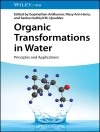This long-awaited second edition of the successful introduction to the fundamentals of heterogeneous catalysis is now completely revised and updated.
Written by internationally acclaimed experts, this textbook includes fundamentals of adsorption, characterizing catalysts and their surfaces, the significance of pore structure and surface area, solid-state and surface chemistry, poisoning, promotion, deactivation and selectivity of catalysts, as well as catalytic process engineering. A final section provides a number of examples and case histories.
With its color and numerous graphics plus references to help readers to easily find further reading, this is a pivotal work for an understanding of the principles involved.
Inhoudsopgave
Preface
1 Setting the Scene
1.1 Prologue: Advances since the Early 1990s.
1.2 Introduction
1.3 Perspectives in Catalysis: Past, Present, Future
1.4 Definition of Catalytic Activity
1.5 Key Advances in Recent Theoretical Treatments: Universability in Heterogeneous Catalysis
1.6 Milestones Reached in Industrial Catalysis in the 20th Century, and Some Consequential Challenges
2 The Fundamentals of Adsorption: Structural and Dynamical Considerations, Isotherms, and Energetics
2.1 Catalysis Must Always be Preceded by Adsorption
2.2 The Surfaces of Clean Solids are Sometimes Reconstructed
2.3 There are Many Well-Defined Kinds of Ordered Adlayers
2.4 Adsorption Isotherms and Isobars
2.5 Dynamical Considerations
2.6 Relating the Activation Energy to the Energy of Chemisorption. Universality in Heterogeneous Catalysis and the BrØnsted-Evans-Polanyi (BEP) Relation.
2.7 Deriving Adsorption Isotherms from Kinetic Principles
2.8 Energetics of Adsorption
2.9 Mobility at Surfaces
2.10 Kinetics of Surface Reactions
2.11 Autocatalytic, Oscillatory, and Complex Heterogeneous Reactions
2.12 Microkinetics: A Summary
3 The Characterization of Industrial and Model Solid Catalysts
3.1 Non-Invasive Methods Suitable for Studies Involving Catalytic Reactors
3.2 A Portfolio of Modern Methods: Introducing the Acronyms
3.3 Which Elements and Which Phases are Present?
3.4 Probing Surfaces with IR, HREELS, AES and XPS
3.5 Ultraviolet-Visible and Photoluminescence Spectroscopy
3.6 The Structure and Crystallography of Surfaces: Nature of Ordered and Reconstructed Surfaces
3.7 Other Structural Techniques for Characterizing Bulk and Surfaces of
Catalysts
3.8 A Miscellany of Other Procedures
3.9 Determining the Strength of Surface Bonds: Thermal and Other Temperature-Programmed Methods
3.10 Reflections on the Current Scene Pertaining In Situ Methods of Studying Catalysts
4 Porous Catalysts: Their Nature and Importance
4.1 Definitions and Introduction
4.2 Determination of Surface Area
4.3 Mercury Porosimetry
4.4 Wheeler´s Semi-Empirical Pore Model
4.5 Diffusion in Porous Catalysts
4.6 Chemical Reaction in Porous Catalyst Pellets
5 Solid State Chemical Aspects of Heterogeneous Catalysts
5.1 Recent Advances in Our Knowledge of Some Metal Catalysts: Extended and in Cluster or Nanoparticle States
5.2 Comments on the Catalytic Behaviour of Nanogold
5.3 Recent Advances in the Elucidation of Certain Metal-Oxide Catalysts
5.4 Atomic-Scale Edge Structures in Industrial-Style Mo S2 Nanocatalysts
5.5 Open-Structure Catalysts: From 2D to 3D
5.6 Computational Approaches
5.7 A Chemist´s Guide to the Electronic Structure of Solids and Their Surfaces
5.8 Key Advances in Recent Theoretical Treatments of Heterogeneous Catalysis
5.9 Selected Applications of DFT to Catalysis
5.10 Concluding Remarks Concerning DFT Calculations in Heterogeneous Catalysis
6 Poisoning, Promotion, Deactivation and Selectivity of Catalysts
6.1 Background
6.2 Catalyst Deactivation
6.3 Some Modern Theories of Poisoning and Promotion
7 Catalytic Process Engineering
7.1 Novel Operating Strategies
7.2 Traditional Catalytic Reactors
8 Heterogeneous Catalysis: Examples, Case Histories, Current Trends
8.1 The Synthesis of Methanol
8.2 Fisher-Tropsch Catalysis
8.3 Synthesis of Ammonia
8.4 Oxidation of Ammonia: Stepping Towards the Fertilizer Industry
8.5 In-Situ Catalytic Reaction and Separation
8.6 Automobile Exhaust Catalysts and the Catalytic Monolith
8.7 Photocatalytic Breakdown of Water and the Harnessing of Solar Energy
8.8 Catalytic Processes in the Petroleum Industry
9 Powering the Planet in a sustainable manner: some of tomorrow´s catalysts (actual and desired) and key catalytic features pertaining to renewable feedstocks, green chemistry and clean technology
9.1 Introduction
9.2 Powering the Planet with Solar Fuel
9.3 Some Significant Advances in Photo-assisted Water Splitting and Allied Phenomena
9.4 The Hydrogen Economy
9.5 Some of Tom
Over de auteur
Professor Sir John Meurig Thomas, FRS, FREng, Former Head of Physical Chemistry , University of Cambridge, is one of the most renowned researcher in the field of heterogeneous catalysis and solid state chemistry. He has been awarded the Davy Medal, the Messel Gold Medal, the Willard Gibbs Gold Medal, U.S. Presidential Green Chemistry Challenge Award, the Linus Pauling Gold Medal and many others. He is the author of over a thousand research papers on the materials and surface chemistry of solids, and over 100 review articles on science, education and cultural issues and the co-author of 30 patents.
W. John Thomas, FR Eng, is Professor Emeritus of Chemical Engineering at the University of Bath.












